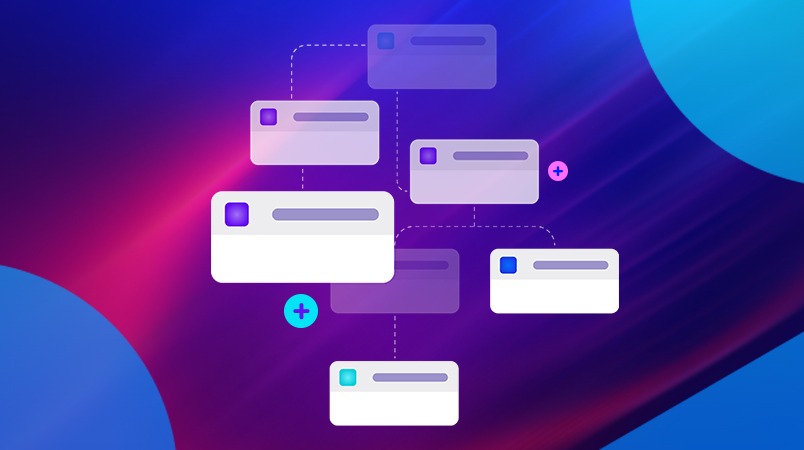The Role Chatbots Played in Automation
Chatbots were a game-changer when they first emerged. They allowed businesses to automate repetitive tasks, reduce response times, and provide 24/7 support. For many companies, chatbots were the first step into the world of AI-driven customer service.
Here’s what made chatbots so useful:
Instant Responses: Chatbots could handle FAQs and simple queries in real-time.
Scalability: They managed multiple conversations simultaneously, reducing the burden on human agents.
Cost-Effectiveness: With relatively low setup costs, chatbots offered a quick win for businesses looking to dip their toes into automation.
However, as businesses and customers demanded more personalized, seamless, and efficient interactions, the cracks in chatbot technology began to show.
The Limitations of Chatbots
While chatbots were a great starting point, their capabilities are inherently limited:
Rigid Interactions: Chatbots rely on pre-defined scripts or basic AI, making them ill-equipped to handle ambiguous or multi-step requests.
Lack of Autonomy: They can guide users to information but rarely resolve issues independently.
Manual Updates: Chatbots require constant human intervention to adapt to new scenarios or improve their performance.
In short, chatbots are reactive tools. They’re great for answering simple questions but fall short when it comes to solving complex problems or delivering personalized experiences.
Why Virtual Agents Are the Natural Evolution
Enter virtual agents: the next generation of automation. Unlike chatbots, these virtual assistants are autonomous problem-solvers designed to handle complex workflows, make decisions, and deliver actionable results.
This isn’t just an upgrade—it’s a fundamental shift in how businesses approach automation. Virtual agents are the logical next step in the evolution of customer interaction, building on the foundation laid by chatbots but addressing their shortcomings.
Here’s why virtual agents are the future:
Contextual Understanding: They grasp the nuances of conversations, remember past interactions, and adapt responses based on context.
Proactive Problem-Solving: Virtual agents don’t just react; they anticipate needs and resolve issues before they escalate.
System Integration: They connect seamlessly with APIs and internal systems, enabling them to manage end-to-end processes like refunds, scheduling, or troubleshooting.
Continuous Learning: Powered by machine learning, virtual agents improve with every interaction, becoming smarter and more efficient over time.
Virtual agents are not just tools; they are digital team members capable of delivering real business value.
How Virtual Agents Simplify Implementation
A common misconception is that virtual agents are complex and expensive to deploy. In reality, they are often easier to implement than traditional chatbots.
Unlike chatbots, which require businesses to build rigid conversation flows, virtual agents use natural language understanding to interact dynamically. This eliminates the need for extensive scripting and allows the assistant to adapt to a wide range of scenarios without manual intervention.
Modern virtual agents also integrate directly with existing systems, reducing the need for external developers or middleware. This streamlined approach means businesses can deploy these virtual assistants in weeks rather than months, with minimal disruption to their operations.
The result is a faster, more efficient setup process that delivers immediate value. Businesses can start seeing the benefits of virtual agents—such as reduced operational costs and improved customer satisfaction—almost immediately.
What Virtual Agents Deliver for Your Business
Virtual agents are more than just a replacement for chatbots—they’re a transformative technology that can revolutionize how businesses operate. Here’s what they bring to the table:
1. Enhanced Customer Experiences
Deliver personalized, context-aware interactions that feel human.
Resolve complex issues autonomously, reducing the need for escalation.
Provide proactive support, anticipating customer needs before they arise.
2. Operational Efficiency
Automate repetitive and intricate tasks, freeing up human agents for high-value activities.
Handle high volumes of inquiries without compromising quality.
Reduce operational costs by streamlining workflows and minimizing manual intervention.
3. Scalability for Growth
Easily adapt to increasing customer demands as your business grows.
Continuously learn and improve, ensuring long-term scalability and relevance.
Why Agentic AI Is the Future
Virtual agents powered by agentic AI represent a transformative leap in automation. Unlike chatbots, which rely on pre-defined rules, agentic AI enables virtual agents to operate independently, making decisions and taking actions without constant oversight.
This autonomy allows virtual agents to go beyond simply responding to customer needs, they anticipate them. For example, they can proactively identify potential issues and offer solutions before customers even realize there’s a problem. This level of intelligence not only enhances customer satisfaction but also streamlines operations by reducing the workload on human agents.
By combining autonomy, proactivity, and scalability, agentic AI ensures that virtual agents are not just tools for today but a strategic investment for the future.
Real-World Success: TAMDIS Case Study
TAMDIS, a logistics company specializing in furniture delivery, faced challenges with repetitive manual tasks and poor customer communication. By adopting advanced automation, they transformed their operations and set the stage for future growth.
The Solution:
TAMDIS implemented interactive messaging with real-time delivery management, replacing basic SMS with rich communication services. They also integrated AI to handle customer inquiries autonomously, reducing the need for phone calls and emails.
The Results:
The company saw a significant reduction in operational workload, improved customer satisfaction through seamless delivery coordination, and enhanced communication security with verified sender identification.
Looking ahead, TAMDIS plans to integrate virtual assistants to further personalize customer interactions and optimize workflows, showcasing the transformative potential of agentic AI.
The Bottom Line: Embrace the Evolution
Chatbots were a valuable first step in the journey toward automation, but the future belongs to virtual agents. They are the natural evolution of chatbots, addressing their limitations and unlocking new possibilities for businesses.
This isn’t just about doing more—it’s about doing it better. Virtual agents deliver faster, smarter, and more human-like interactions, making them an essential tool for businesses looking to stay competitive in a rapidly changing landscape.
The time to act is now. By embracing virtual agents, you can future-proof your operations, enhance customer satisfaction, and drive long-term growth.
Ready to take the next step? Let’s talk about how virtual agents can transform your business.
The Future Is Agentic AI. Are You Ready?







